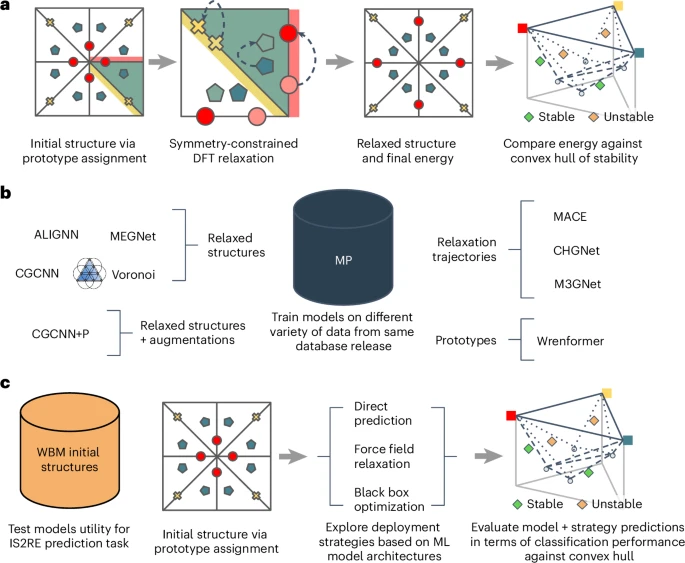Revolutionizing Materials Discovery: Machine Learning Benchmarks Crystal Stability with Matbench Discovery

In a landmark step forward for computational materials science, a consortium of researchers led by Janosh Riebesell and Kristin A. Persson from Lawrence Berkeley National Laboratory and the University of Cambridge has introduced a new benchmarking standard for machine learning (ML) models aimed at accelerating the discovery of stable inorganic crystals. Published in Nature Machine Intelligence (June 2025), their work unveils Matbench Discovery, an open-source evaluation framework designed to simulate real-world materials discovery campaigns using ML-guided predictions.
What is Matbench Discovery?
Matbench Discovery addresses four major hurdles in materials discovery: benchmarking ML models prospectively (not retrospectively), identifying meaningful prediction targets (like distance to the convex hull for thermodynamic stability), using informative performance metrics (beyond just mean absolute error), and evaluating scalability across large chemical spaces.
Most importantly, it moves away from relying solely on formation energy as a metric, highlighting the importance of classifying stability through convex hull distances, especially in pre-filtering for high-throughput density functional theory (DFT) simulations.
Key Results: ML Models Go Head-to-Head
The team evaluated 13 diverse ML models, ranging from traditional random forests to advanced universal interatomic potentials (UIPs) that include force and stress data. Leading the pack was EquiformerV2 + DeNS, which achieved a remarkable discovery acceleration factor (DAF) of up to 6.33—nearly the theoretical maximum—when validating the top 10,000 predicted stable materials.
UIP-based models consistently outperformed energy-only approaches, particularly in reducing false positives near the thermodynamic threshold of 0 eV/atom. This is vital since false positives incur high opportunity costs in experimental validation.
Implications for the Future
Beyond predictive accuracy, the research emphasizes the need for benchmarks that reflect the conditions and constraints of actual materials discovery workflows. Matbench Discovery’s use of unrelaxed structures for input, which are readily generated via elemental substitutions, makes the framework highly relevant for practical deployment.
Moreover, this benchmark sets a precedent for incorporating data from massive open materials databases like the Materials Project, AFLOW, and OQMD. The integration of large training datasets and realistic test sets marks a turning point for ML-assisted discovery—bringing us closer to data-driven breakthroughs in energy storage, quantum materials, and electronics.
From Benchmarks to Real-World Applications
Looking ahead, the authors propose expanding benchmarks to capture dynamic stability, synthesis pathways, and non-equilibrium materials behavior. These next steps will not only fine-tune ML models but also solidify their utility in predictive, sustainable materials design.
As computational power scales and databases grow richer, tools like Matbench Discovery are poised to become foundational in global scientific efforts to fast-track the development of next-generation materials.
For full access to the original study, please see: https://www.nature.com/articles/s42256-025-01055-1
Sponsored by PWmat (Lonxun Quantum) – a leading developer of GPU-accelerated materials simulation software for cutting-edge quantum, energy, and semiconductor research. Learn more about our solutions at: https://www.pwmat.com/en
📘 Download our latest company brochure to explore our software features, capabilities, and success stories: PWmat PDF Brochure
📞 Phone: +86 400-618-6006
📧 Email: support@pwmat.com

Comments
Post a Comment